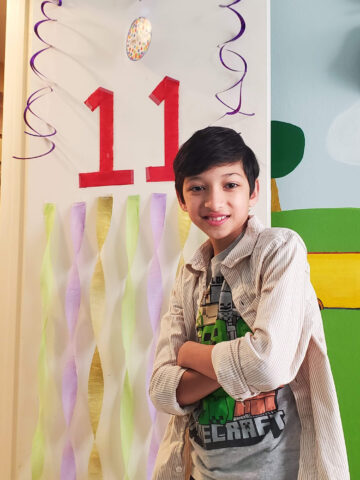By Amanda Traylor, physical therapist at CHOC

Every year in October, the American Physical Therapy Association celebrates National Physical Therapy Month and this year, we’re highlighting the role physical therapy plays in treatment and management of chronic pain. Pediatric chronic pain is more common than you may think. In a 2014 international survey of pain in adolescents, approximately one third of adolescents reported musculoskeletal pain on a monthly or more frequent basis. It can start after an injury, illness, or without a trigger at all. Chronic pain can have a range of effects, from the mental stress of pushing through pain to participate in physical activity to avoidance and removal from activities including school and sports. At CHOC, the rehabilitation team frequently treats children and adolescents with diagnoses of chronic pain, complex regional pain syndrome, amplified pain, fibromyalgia, and pain associated with hypermobility. Here are some common myths associated with chronic pain, debunked.
Myth 1: Your pain is all in your head.
While it may be true that there is no damage to or illness in your body, the pain is real. Children and adolescents frequently express their frustration with the disbelief and doubt projected onto them about their pain. But the tricky thing is, the head is in charge of your pain. Whether there is tissue damage or not, your brain is the one that perceives the pain signals and interprets them. While the brain is the command center of your pain, the nerves are the messengers. Without the brain and nerves, there would be no perception of pain.
Myth 2: Rest will make things better.
During an acute pain episode when there is damage to the body in some way, pain is a protective response. It lets us know when to rest and allow healing and teaches us to avoid dangerous situations. With chronic pain, this learned response becomes harmful. The more the body rests, the more feedback is sent that the body is injured. Movement can help counteract that feedback and return you to the activities you enjoy. Your physical therapist can teach you how to move in the correct ways to protect your joints, prevent injury and restore your ability to move around in your own environment.
Myth 3: Pain medication will help my pain.
Prolonged use of pain medication has been a topic of interest in the past few years due to the opioid epidemic. As the body builds up tolerance to commonly used pain medications, higher and higher doses are needed for relief. With a chronic pain, this could yield harmful side effects and does not address the cause of the pain. In some cases, other medication options may better address the origin of chronic pain. These options, including non-pharmacological management, should be discussed with your physician.
Myth 4: Physical therapy alone will help.
Physical therapy is an excellent tool to address movement dysfunction that occurs as a result of prolonged pain. It can help return patients and families back to the activities they enjoy through a variety of strategies tailored to each individual’s needs. Physical therapy could include strengthening, balance training, stretching, endurance training, relaxation strategies, neuromuscular re-education using electrical stimulation, and more. But physical therapy alone is not the gold standard. A pain psychologist and physician are vital to the team. A pain psychologist can help address the effects that chronic pain can have on your life as well as decrease the amount of pain signals sent to your nerves via cognitive behavioral therapy.
Myth 5: The pain only affects the patient.
Chronic pain has major impacts on not only the individual experiencing it, but also their family and friends. Parents see the effects of the pain and want to help, but frequently feel that they are at a loss. Siblings want their sister or brother to go back to the role they played before the pain started. Friends at school can see the individual pulling away, limiting themselves from the activities they previously enjoyed together. When a child is affected by pain, their loved ones are affected as well. The parent, family, and friend support through the treatment and management of this diagnosis is essential. Frequently, the medical team incorporates the entire family in our approach and their participation can make the biggest impact on the individual’s success.





